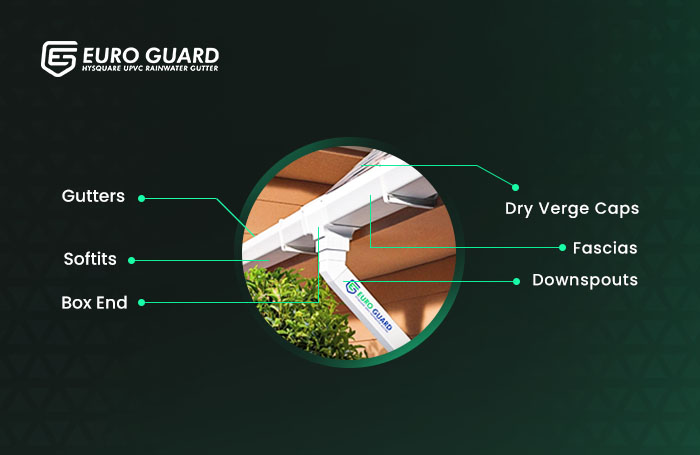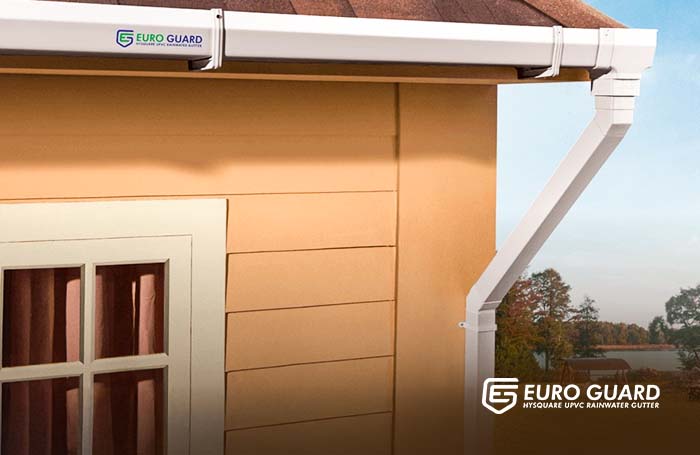25 Sep 2024
Rooftop Rainwater Harvesting Made Simple: Easy Steps to Collect & Reuse Rainwater

Understanding Rooftop Rainwater Harvesting
Rooftop Rainwater Harvesting is the process of collecting, purifying, and storing rainwater from roof surfaces for future use. This centuries-old tradition has been revived in recent years as a reaction to global water scarcity challenges, notably in India. RRWH systems can provide a sustainable source of water for a variety of applications, including home usage and groundwater replenishment.
The Importance of Rainwater Harvesting
With the humongous increase in urbanisation, and unpredictable climate change affecting rainfall patterns, the need for effective water management becomes more pressing. Here’s why rainwater harvesting from the roof is crucial:
- Water Conservation: RRWH reduces dependence on municipal water supply and helps conserve this precious resource. By making use of rainwater from rooftops, this system ensures that rainwater is efficiently used, rather than being wasted as runoff.
- Flood Mitigation: Rainwater harvesting helps control stormwater runoff, thereby reducing the risk of flooding in urban areas. By diverting and collecting rainwater, this prevents excessive water accumulation on roads and in drainage systems.
- Groundwater Recharge: Harvested rainwater can be used to replenish groundwater levels, which are rapidly depleting due to overuse and lack of recharge. This contributes to maintaining a stable water table and ensures a sustainable water source in rural and urban areas alike.
- Cost-Effective: RRWH is an economical solution, which lowers your water bills by providing a free, natural source of water. It also reduces any need for expensive water treatment and infrastructure, especially in rural or water-scarce areas.
- Environmental Benefits: Beyond the water conservation bit, RRWH also reduces soil erosion, minimises strain on natural water bodies and helps maintain ecological balance. By making use of rainwater, it significantly decreases the demand for over-exploited water sources such as rivers and lakes.
Overall, RRWH is a very sustainable, environment-friendly, and cost-effective way to manage water resources in the rapidly evolving world.
The Components of Rooftop Rainwater Harvesting
A typical Rooftop Rainwater Harvesting system consists of four main components:
- Catchment Area: The roof serves as the primary catchment surface. Roofs should be made of non-toxic materials.
- Transportation System: This includes rainwater gutters and downpipes that channel the water from the roof to the storage or recharge system. Best rainwater guttering pipes play a crucial role in efficient water collection and transport.
- Filtration System: Before storage or recharge, the collected water passes through filters to remove debris and contaminants. Common filtration methods include sand, gravel, and charcoal filters.
- Storage or Recharge System: Depending on the intended use, the water is either stored in tanks for direct use or directed to recharge structures to replenish groundwater.

Types of Rooftop Rainwater Harvesting Systems
Rooftop rainwater harvesting is the process of collecting and storing rainwater from rooftops for later use, thereby conserving water and reducing reliance on external water sources. Rooftop rainwater collection systems come in a variety of designs, each tailored to a specific requirement and context.
- Direct Storage System: This system collects rainwater from the roof and directs it into a storage tank or reservoir. The water can be used immediately or saved for later use. This system usually incorporates a first-flush diverter to remove particles from the early downpour. Ideal for: Household use, Vertical farming, and other non-potable applications.
- Recharge Pit System: Rainwater collected from rooftops is directed into recharge pits, where it percolates into the ground and replenishes groundwater levels. Ideal for: Areas with low groundwater levels or that require groundwater replenishment.
- Filter and Storage System: This technique purifies rainwater before it is stored using a filtration mechanism like sand or charcoal filters. Ideal for: Drinking water and other residential applications where water purity is critical.
- Dry System: In a dry system, the downspouts link directly to the storage tank. The pipes drain fully after each rain event. Ideal for: Small to medium rooftop areas that receive seasonal rainfall.
- Wet System: This method stores water in underground pipes in between rain occurrences. Ideal for: Larger rooftops with a storage tank positioned far from the downspout.
- Green Roof Harvesting: This involves a rooftop that is covered with vegetation. Ideal for: Urban areas or buildings where green infrastructure is encouraged.
- Percolation Tank: Rainwater is gathered and fed into a percolation tank to recharge groundwater. Ideal for: Places where groundwater recharging is important or where rainfall is infrequent.
Each system can be customised depending on the specific needs, space availability, and local climate conditions.
Design Considerations for Rooftop Rainwater Harvesting Systems
To ensure the effectiveness and safety of your RRWH system, consider the following:
- Roof Size: The larger the roof, the more rainwater you can collect. Ensure unobstructed flow to optimise water capture.
- Rainfall Patterns: Use local rainfall data to estimate water collection and plan for peak rainfall with overflow systems.
- Water Demand: Design the system based on intended use (e.g. potable or non-potable). Match storage capacity to usage.
- Storage Tank Capacity: Choose tank size based on rainfall and demand, ensuring it’s durable and easy to maintain.
- Water Quality: Install flush-first diverters and filters to maintain water cleanliness, especially for drinking purposes.
- Gutter and Downspout Design: Ensure gutters and downspouts can handle heavy rain. Fit leaf guards to reduce debris.
- First-Flush Diverters: Essential for preventing debris from entering the storage tank.
- Overflow Management: Design overflow pipes to direct excess water away from structures safely.
- Storage Tank Location: Position the tank for easy maintenance, preferably in a shaded area to prevent algae growth.
- Maintenance: Regular cleaning of gutters, filters, and tanks ensures system efficiency and longevity.
- Piping: Use corrosion-resistant materials and ensure a proper slope for smooth water flow.
- Budget: Plan for both installation and ongoing maintenance costs, considering possible grants or subsidies.

Installation of Rooftop Rainwater Harvesting Systems
Let us get straight on with the basics of installation:
- Roof and Gutter Setup: Ensure the roof is clean and free of contaminants. Install gutters with the right slope to direct water efficiently into the downspouts.
- Downspouts and Filters: Attach downspouts to the gutters, leading water to the storage tank. Fit filters or first-flush diverters to remove debris and impurities before water enters the tank.
- Storage Tank Installation: Place the tank on a stable base in a shaded area to prevent algae growth. Ensure easy access for cleaning and maintenance. Position it to allow gravity-based water flow, or install a pump if needed.
- Overflow and Drainage: Set up an overflow system to manage excess water, directing it safely away from buildings or into a drainage or groundwater recharge system.
- Piping and Connection: Install corrosion-resistant pipes, ensuring a proper slope to prevent water stagnation. Ensure that all connections are watertight.

Maintenance of Rooftop Rainwater Harvesting Systems
There are a few maintenance tips you need to keep in mind when installing RRWH;- Regularly clean gutters and downpipes to prevent blockages.
- Inspect and clean filters periodically.
- Check for and repair any leaks in the system.
- Clean storage tanks annually and ensure they remain covered.
The Benefits of Rooftop Rainwater Harvesting
Implementing a Rooftop Rainwater Harvesting system offers numerous benefits at various levels:1. Environmental Impact
- It reduces the urban flooding and soil erosion.
- Effectively decreases the load on stormwater drainage systems.
- Contributes to groundwater recharge.
2. Economic Advantages
- Lowers water bills over time.
- Reduces the dependence on municipal water supply.
- Can increase property value.
3. Health and Hygiene
- Provides easy access to clean, potable water when properly treated.
- Reduces the risk of waterborne diseases associated with contaminated water.
Success Stories of Rooftop Rainwater Harvesting Regions
Here are some remarkable success stories of regions that embraced Rooftop Rainwater Harvesting (RRWH) and secured extraordinary victories in their battle against water scarcity. These case studies highlight how effective RRWH systems can be in addressing critical water challenges and creating sustainable solutions for the future.1. Chennai, Rooftop Rainwater Harvesting in India: A Solution for the Urban Water Crisis
Context: Chennai installed RRWH in numerous buildings in response to acute water shortages. Result: This program replenished groundwater, decreased dependency on outside water sources, and produced water for household use in the arid months.2. Berlin, Rooftop Rainwater Harvesting in Germany: Harvesting Green Roofs
Context: To combat urban flooding and promote water conservation, the city installed RRWH systems with green roofs. Result: The system supplied water for non-potable needs, such as gardening and public areas, decreased urban heat, and enhanced stormwater management.3. Australian Schools Initiative
Context: Many schools in Australia installed RRWH systems to tackle water scarcity. Outcome: Schools were able to reduce water bills and use harvested rainwater for landscaping and toilet flushing, contributing to sustainability education.4. Rooftop Rainwater Harvesting in Gujarat, India - Community-Level RRWH
Context: In drought-prone Gujarat, a community-driven RRWH program was developed to recharge groundwater. Outcome: Increased groundwater levels, giving farmers a consistent water source for irrigation during dry seasons. These examples demonstrate the versatility and effectiveness of RRWH systems in addressing water challenges across different regions.Rooftop Rainwater Harvesting: Government Initiatives and Support
The Indian government has recognised the importance and effectiveness of rainwater harvesting in India:- Many states have made RRWH mandatory for new constructions.
- Tax incentives are offered in some regions for RRWH implementation.
- Urban Local Bodies (ULBs) provide technical support and guidelines for RRWH systems.
Advanced Techniques and Innovations
Rooftop Rainwater Harvesting (RRWH) is a dynamic and ever-changing area that constantly brings novel upgrades, resulting in smarter, more efficient solutions to suit the growing demand for sustainable water management. The latest techniques and innovations in RRWH include:- Smart Sensors
- Solar Integration
- Modular Systems
Challenges and Solutions
While RRWH offers numerous benefits, it's not without challenges:- Initial Cost: While there's an upfront investment, the long-term savings often outweigh this.
- Maintenance: Regular upkeep is crucial but can be simplified with proper design and quality components.
- Water Quality: Proper filtration and treatment systems can ensure safe water for various uses.
The Future of Rooftop Rainwater Harvesting
As water scarcity becomes more prevalent with each passing day, RRWH is designated to play a very important role.- Integration into smart city planning.
- Development of more efficient and cost-effective systems.
- Increased adoption in both urban and rural areas.

![Rain Damage: Hidden Dangers and Proactive Solutions to Save Big Rainstorms can be both a blessing and a curse. While they substantially nourish the earth, they also pose a hidden threat to homes. From cracked foundations and leaky roofs to mouldy interiors, rain damage silently erodes the value and safety of your property. And with […]](/_next/image?url=https%3A%2F%2Fadmin.euroguardhysquare.com%2Fwp-content%2Fuploads%2F2025%2F03%2Fblog-01.webp&w=3840&q=100)
![The global water crisis has today reached the Indian subcontinent as well. Despite being a country that experiences abundant rain, we have been facing an acute water shortage in recent times. The major cities like Delhi, Mumbai and Bengaluru are forced to hire private water tankers for their daily needs of water. The per capita […]](/_next/image?url=https%3A%2F%2Fadmin.euroguardhysquare.com%2Fwp-content%2Fuploads%2F2025%2F11%2Frainwater-harvesting-methods-explained.webp&w=3840&q=100)
![Rainwater harvesting – given the water scarcity that India is facing, it has become the best option that you want to experiment with. But, wait, it isn’t just about experimentation. Rainwater harvesting comes with several benefits. Homeowners today are waking up to the reality of the water crisis and trying to find the ways to […]](/_next/image?url=https%3A%2F%2Fadmin.euroguardhysquare.com%2Fwp-content%2Fuploads%2F2025%2F11%2Ftop-advantages-rainwater-harvesting.webp&w=3840&q=100)
